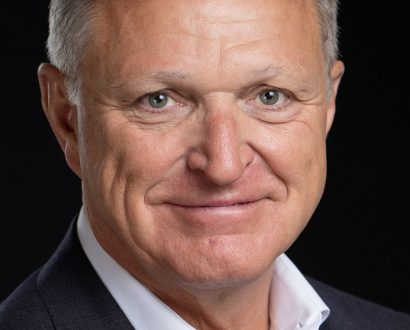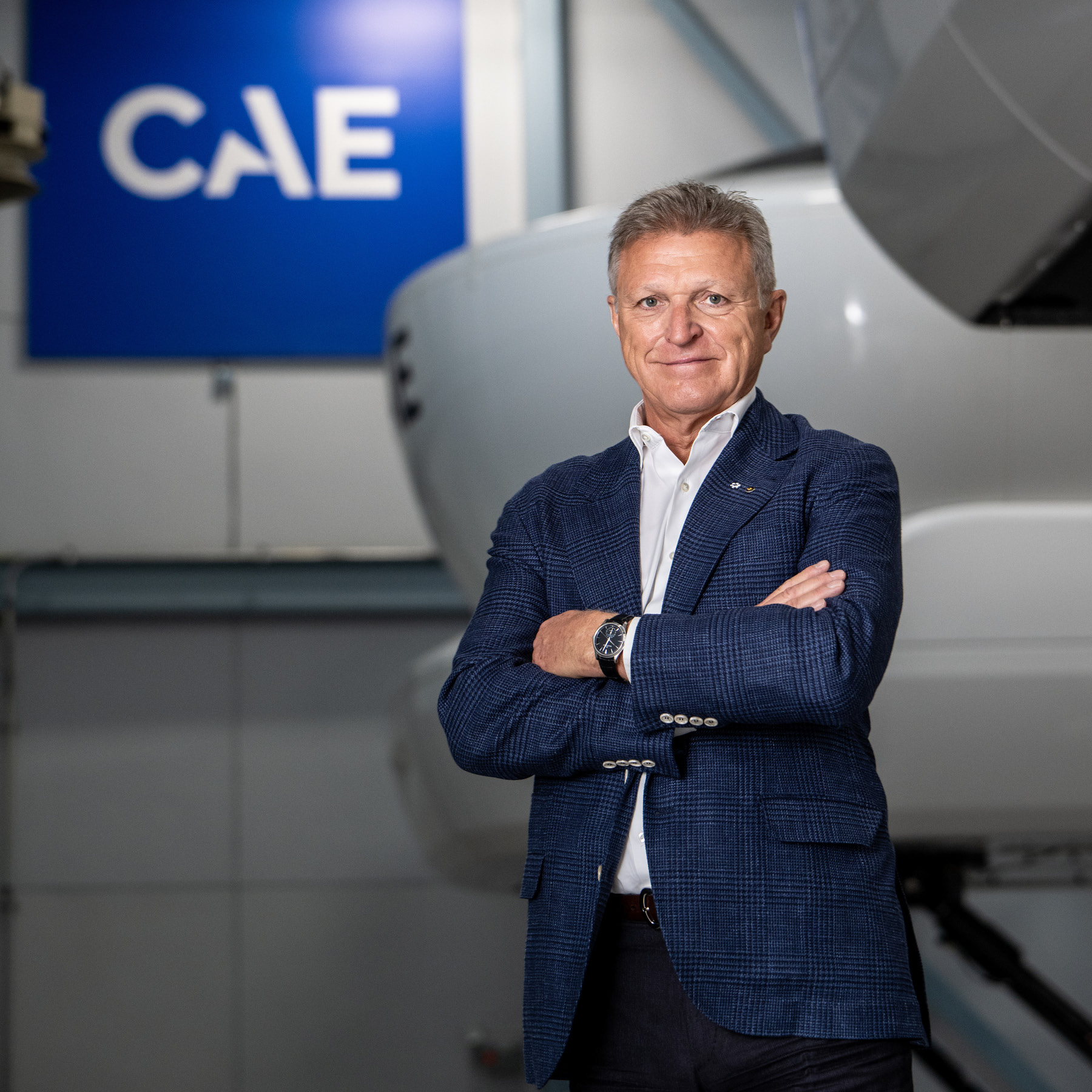Practice Makes Perfect: Marc Parent

Marc Parent remembers with crystal-clear clarity a video that went viral during the COVID-19 pandemic of an airplane mid-air with its engine on fire.
"The passengers were freaking out, which is normal, of course, for the situation," he tells The CEO Magazine.
At the same time, he recalls, you could hear the pilots in the background, talking to air traffic controllers.
"They were as calm as day, like they were having a coffee or something," he says.
Parent, the outgoing President and CEO of CAE, knows exactly why their reaction was so composed.
"Because they have seen this time and time again," he explains. "Every six months, they rehearse this."

"We prepare people for the moments that matter."
As the global leader in flight simulation technology, the immersive simulation CAE delivers is so realistic and visceral, Parent explains, that a pilot’s hands and feet move before their brain even comprehends what’s going on.
"That’s what we do at CAE," he says. "We train people again and again – every six months – for an engine that’s failed or an engine that’s on fire, whatever emergency will statistically never happen to them."
Yet such a critical emergency will happen to someone.
"That person has to be prepared for that moment and be calm, collected and recover the aircraft," Parent notes.
That’s where CAE’s noble mission comes to the fore.
"We prepare people for the moments that matter," he says. "That’s at the heart of everything that we do."
The next level
Parent joined CAE in 2005, bringing 20 years of experience in the aerospace industry with him, and became President and CEO in 2009. Under his leadership, the company has undergone an enormous transformation from a business that primarily sold simulators to one that offers a suite of services alongside simulators as a product.
"It started off with a realization when I came aboard that to be really able to take this company to the next level, we needed to transform it to ensure an underlying source of revenue was there and was recurring on a sustained basis," he says.
When he became CEO 16 years ago, 80 percent of the business was selling simulators to airlines, while the remaining 20 percent consisted of selling simulators to other types of businesses, with some training services thrown in.
"We’ve grown the company to be, by far, the largest simulation-based training provider in the world."
He quickly identified the growth potential for that service to be pilot training. Today, while maintaining its market-leading position in selling simulators and growing that segment of the business, the majority of CAE’s revenue comes from using its simulators to train people around the world.
"We’ve grown the company to be, by far, the largest simulation-based training provider in the world," he says. "We’ve created the only third-party capability for airlines to be able to outsource their pilot training on a global basis."
Flight success
In 2024, Parent was inducted as a Living Legend of Aviation. He is a recipient of the Order of Canada, the country’s highest civilian honor and was named a knight of the Ordre National du Québec, the province's highest distinction. Other accolades include Parent being inducted into Québec’s Air and Space Hall of Fame and being named Defence Executive of the Year by Canadian Defence Review.
Under his leadership, CAE’s annual revenue has nearly doubled, rising from US$1.56 billion to US$3 billion. The key was executing at scale.
"We train over 135,000 pilots a year; we deliver over 1.3 million training hours across 240 locations and 40 countries around the world,’ he says. "Nobody does anywhere near this amount of training – not even a fraction of it."
Such is its reach that when Parent takes a flight – something that happens with frequency – he can almost guarantee that it’s being helmed by a pilot trained in CAE’s simulators.
"On any given day, there’s a very high likelihood that the pilots flying your aircraft have either been trained in one of our simulators or trained in one of our training centers," he says.
The long view
Parent knows the transformation of the Montreal-headquartered multinational may look simple in the rearview mirror, but it didn’t happen without a deliberate choice to take the long view.
"We had the vision, but to enact it, we were going to need this capability," he points out.
Infrastructure needed to be created, so in the early 2010s, CAE began to populate the world with simulators and training centers.
"There were a lot of people looking at me in a quizzical fashion," he remembers. "You’re spending all this money, this capital and deploying all these acquisitions around the world. You’re changing the business from a products company.
"That takes a lot of intestinal fortitude because you have got to be sure that those returns are going to come off the assets you deploy."
Yet Parent was resolute in his strategy.
"As a leader, you have to know your markets to understand what’s coming around the corner," he says. "For me, what was coming around the corner was simple at the time."
He knew that with the growth of the middle class around the world and in emerging markets in particular, there was a huge population starting to have the disposable income to be able to fly on airplanes. At the same time, carriers around the world were starting to copy the low-cost model that was made famous by airlines like Southwest Airlines, JetBlue, EasyJet and Ryanair.
Not only would the growing middle class and their appetite for travel fuel sales of aircraft, but it was also fueling the need for training.
"There was no infrastructure at scale in those companies," he says.
So, CAE became a logical partner. "They didn’t have to own their simulators, we could create that capability for them," he adds.
As well as ensuring commercial airlines have access to the latest safety training, CAE works with business aircraft and defense. In fact, it’s just as likely that a military pilot is trained by CAE as a commercial pilot, too. Defense training has been a huge growth area for the company.
Under Parent’s leadership, CAE’s Defense & Security business grew from almost nothing into a powerhouse in military training.
"We train pretty much every pilot in the United States military," he reveals. "Army, fixed wing, rotary wing – in fact, we train all 43,000 members of United States military flight crews across all branches at some point in their career."
This capability extends globally.
"We’ve created a vertically integrated capability where we train people on simulators, on aircraft – and literally have hundreds of aircraft ourselves," he explains. "We don’t just train how to fly – we train the military to execute their mission and return home safely."
A long legacy
Parent is a self-described aviation geek who learned to fly when he was 17.
"I started as an engineer and I designed aircraft," he says.
Before joining CAE, he spent two decades at Bombardier Aerospace, working for Canadair, Learjet and de Havilland, brands that would come under the Bombardier umbrella during his tenure there.
"There’s a very high likelihood that the pilots flying your aircraft have either been trained in one of our simulators or trained in one of our training centers."
In late 2024, after 20 years with CAE, Parent announced he would be leaving the company at the annual general meeting in August 2025; while his replacement has yet to be named, what’s clear is the incredible legacy Parent is leaving.
"I'm a geek, a pilot and an engineer, and I feel so privileged," he says. "If you think about aviation, it hasn't been around that long, and in my life I’ve seen a big part of that.
"I’ve always said, to fly airplanes, you need two things: fuel and trained pilots. And the training is what we do. I feel so proud about the fact that we continue to transform training and bring the best and the latest safety training to airlines around the world."